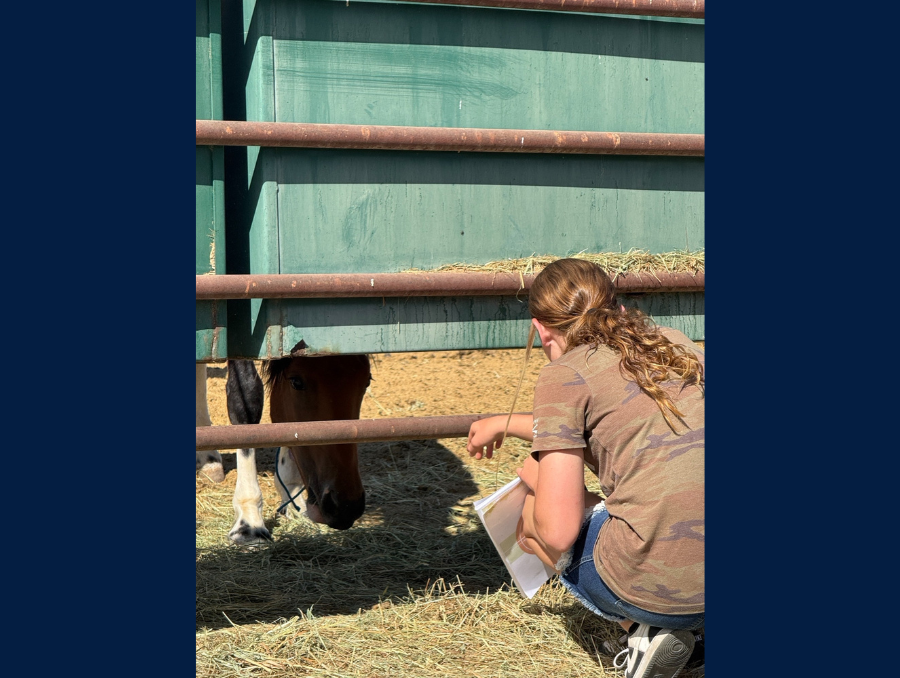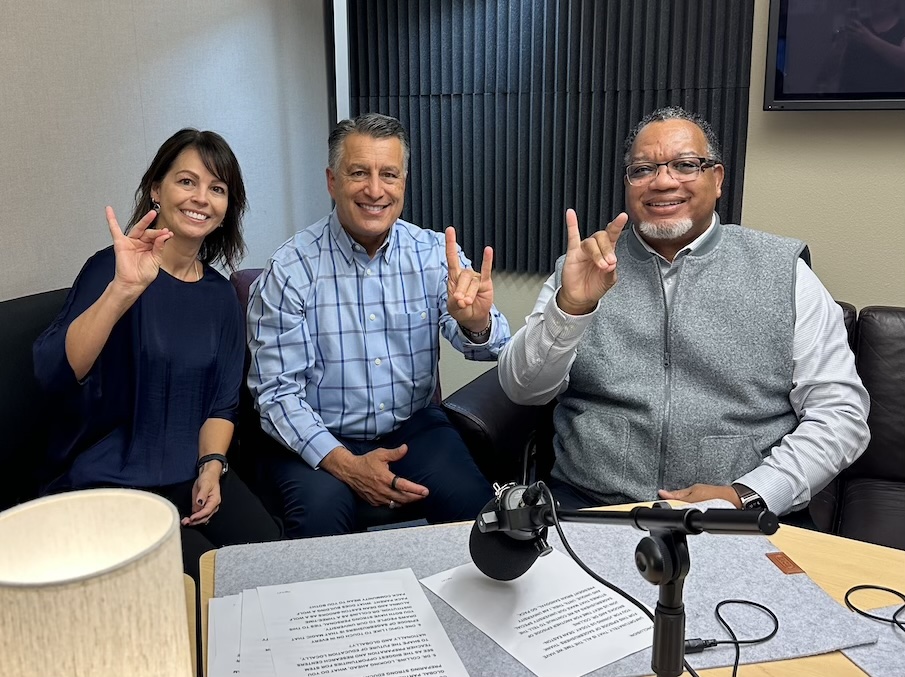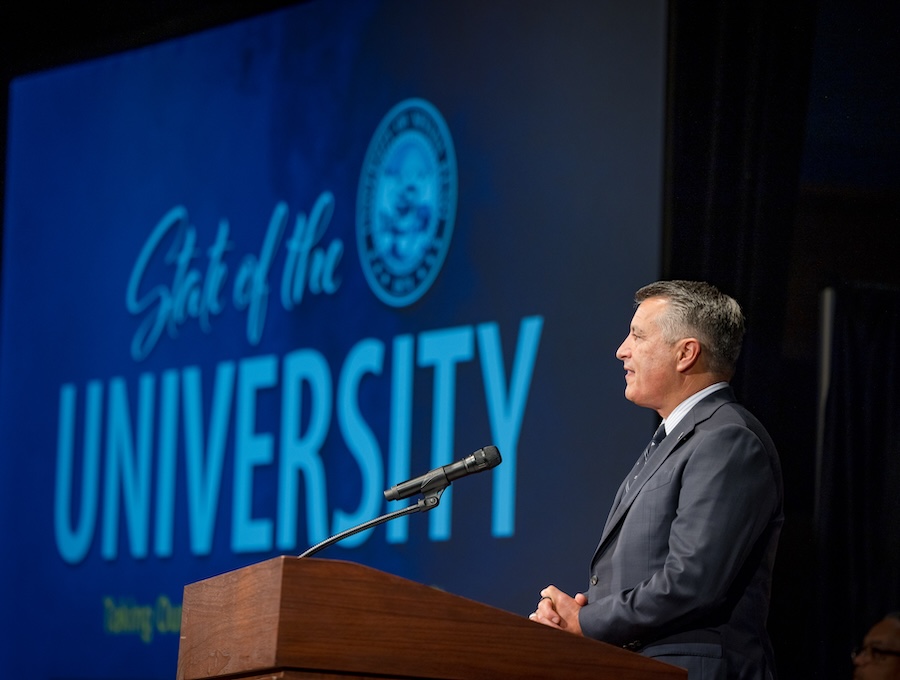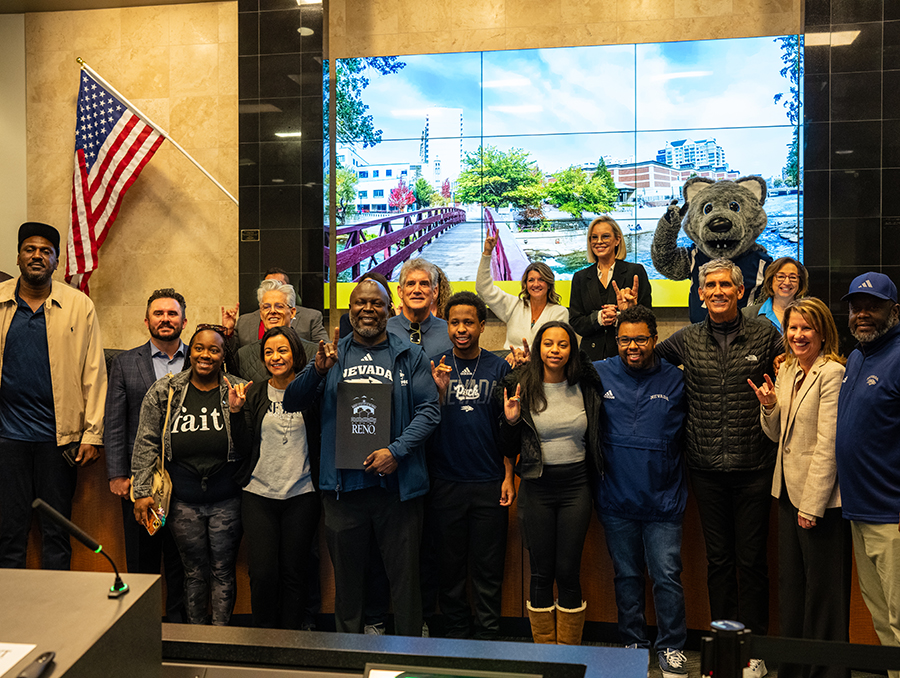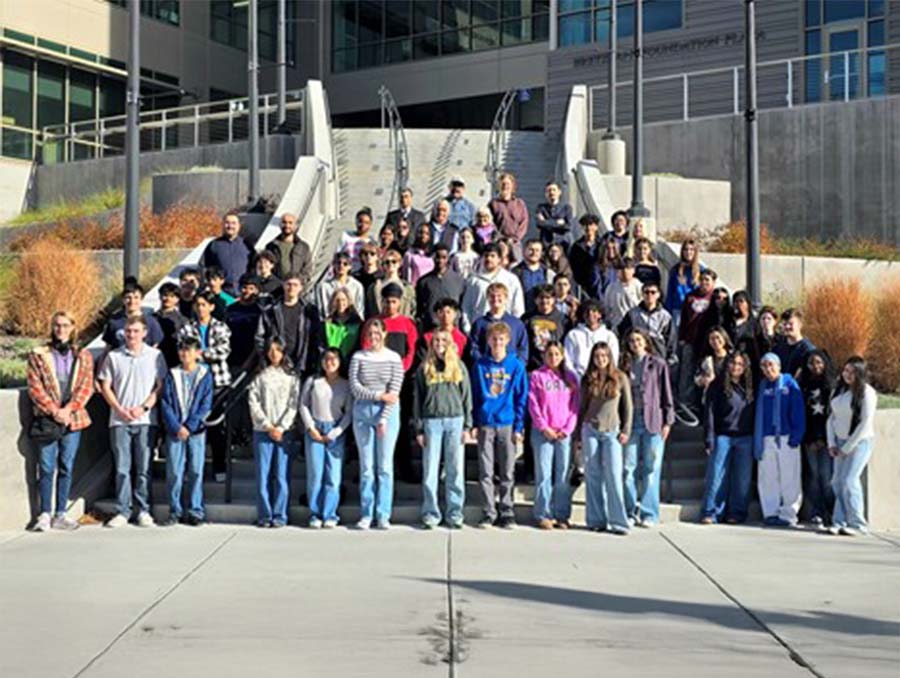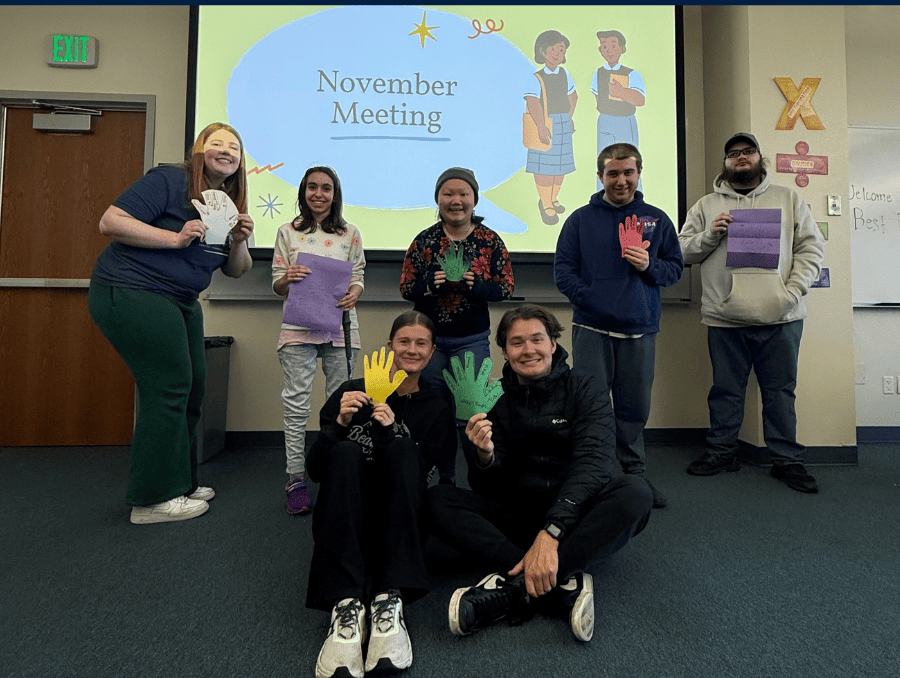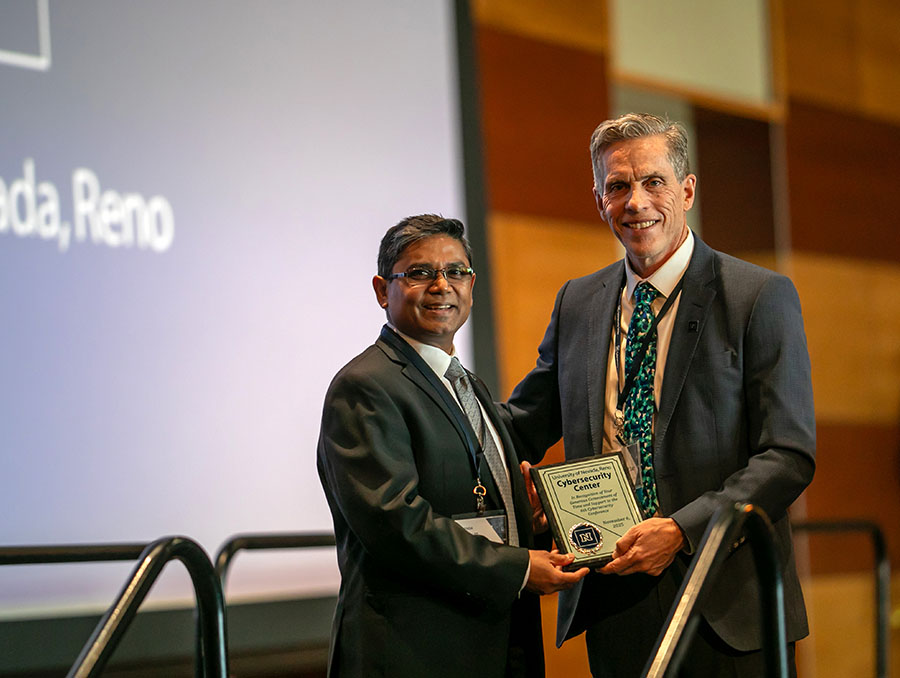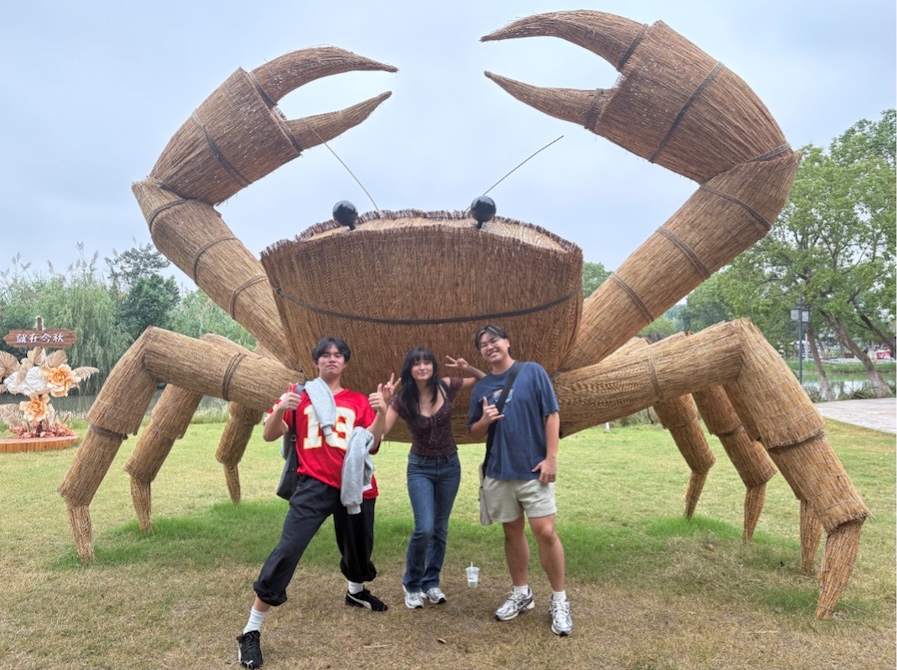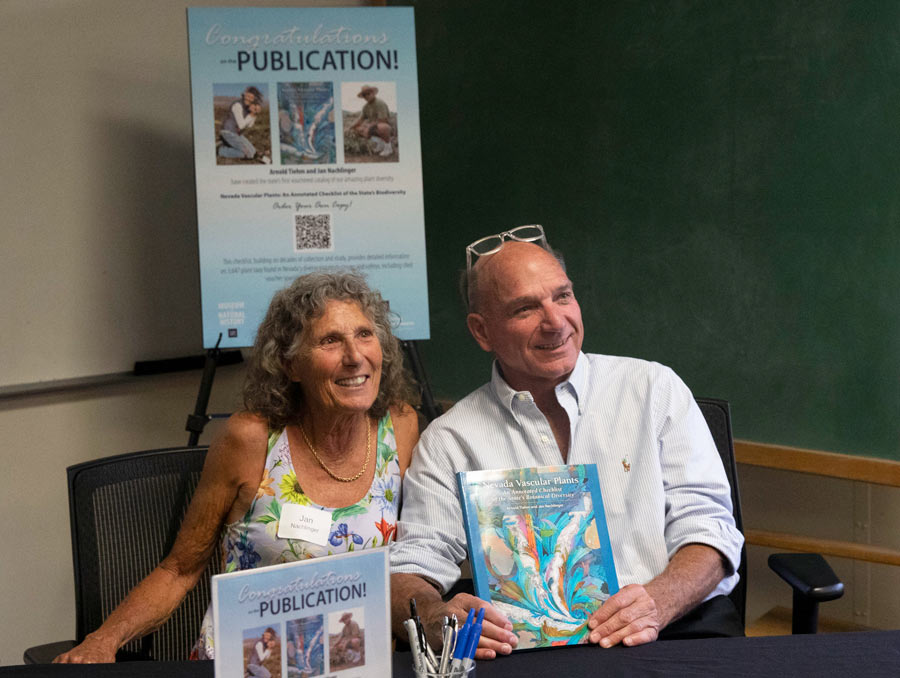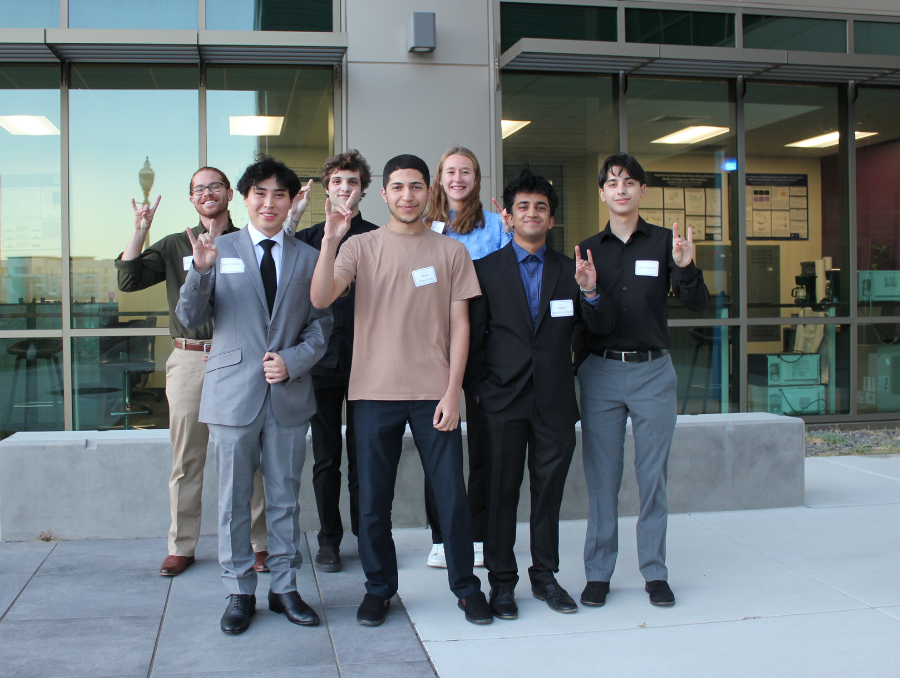In schools across our state today, things might be looking a little more “green.” That’s because, with the new school year underway, so are 4-H youth development clubs and activities, and today is “Go GREEN Day,” where 4-H youth, volunteers and staff are encouraged to wear green as a kick-off to the new 4-H year and to National 4-H Week, Oct. 5 – 11. Here in Nevada, the program’s leader says 4-H activities have evolved significantly from the organization’s rural roots over 100 years ago, with one Nevada youth recently even earning his private pilot certificate through a local 4-H program.
“Today’s 4-H clubs and activities go beyond raising animals and other traditional activities that many may think of, although those clubs are still a valuable part of our offerings,” said Lindsay Chichester, Nevada 4-H Program leader with University of Nevada, Reno Extension. “Our kids are also doing hands-on activities to learn about things like robotics, self-defense, sign language, creative writing and even hot air ballooning. 4-H has become the largest youth development organization in the country because we’ve adapted to include a variety of activities to reach youth in both urban and rural communities. But, what’s consistent across all our activities is that they aim to equip young people with the skills, confidence and resilience needed for career-readiness and to provide leadership and service in their communities and beyond as adults.”
Kicking off the 4-H year: time for youth to get involved
During National 4-H Week, and throughout the month, Chichester and her statewide 4-H team are encouraging youth and parents who may be interested in learning more about 4-H to get involved by attending a local 4-H activity or by reaching out to their local county 4-H office for more information.
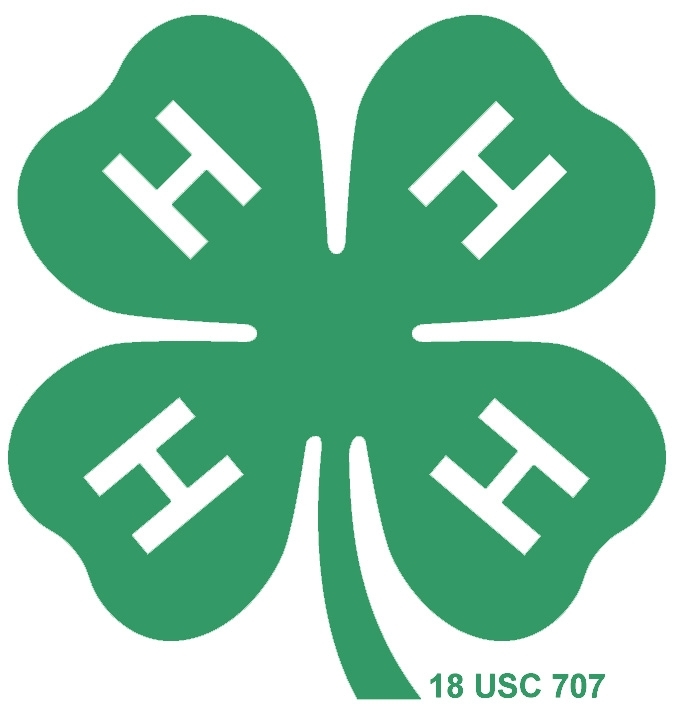
Here in Northern Nevada, one event youth and their families can attend is the 4-H Kickoff Event, Oct. 23 at 5:30 p.m., in Reno at the Extension Office, 4955 Energy Way. Leaders and members of various clubs will be on hand offering activities, providing information on their clubs, and helping interested youth get signed up for the new 4-H year. Clubs focusing on livestock will begin at 5:30 p.m., while all other clubs will begin at 6 p.m.
In many Nevada communities, youth activities can be scarce or costly, Chichester said, and 4-H engages with the partners and volunteers in the community to address that.
“4-H strives to provide free or very affordable, unique and meaningful educational experiences to engage Nevada youth across the state, from those tucked away in our most rural areas to those in heavily populated urban centers,” she said.
Just a few highlights this year include 4-H youth learning about wild mustangs and land management at a Mustang Camp; learning about civic engagement by providing Christmas tree ornaments for a Nevada-grown tree that will be displayed as the 2025 U.S. Capitol Christmas Tree in Washington, D.C., and learning about what it takes to get a pizza on their plate by growing and producing their own ingredients – even grinding their own grain to make flour.
Immersive camps: youth explore today’s complex issues
At the overnight 4-H Mustang Camp held this July in Eureka, Nevada, 4-H youth from Nevada and across the West learned about managing public lands, rangelands, wild horses and burros. The goal was to look deeper at the relationship between healthy lands and healthy horses. The program was a collaboration among our University of Nevada, Reno Extension; along with Utah State Extension; University of California Cooperative Extension; and the BLM’s Wild Horse and Burro Program.
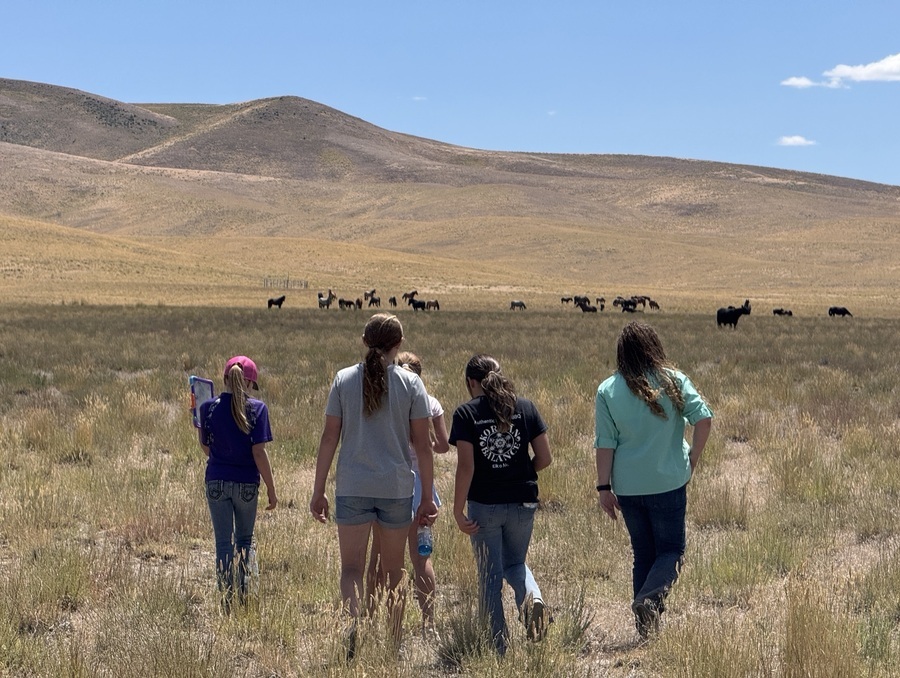
During the first day of the camp, youth spent some time in the classroom, learning about the mustangs and the ecosystem that supports them, as well as other animals, plants and grasses. Then, they moved out onto the range, where everything they had learned about “came to life,” according to Tosha Kerby, a 4-H instructor with Extension in Eureka County.
“The youth were thrilled to see the wild horses, especially the foals,” she said. “It was incredible to watch their curiosity grow as they explored – finding animal tracks, seeds from plants and even bones. They immediately began discussing and debating what each item they found might be. One of the youth said while eating our lunch out on the range, ‘Imagine if we had to walk 20 miles to get a drink.’ This was a great observation, as we had not seen a water source for the horses in quite some time, and one we found was dried up.”
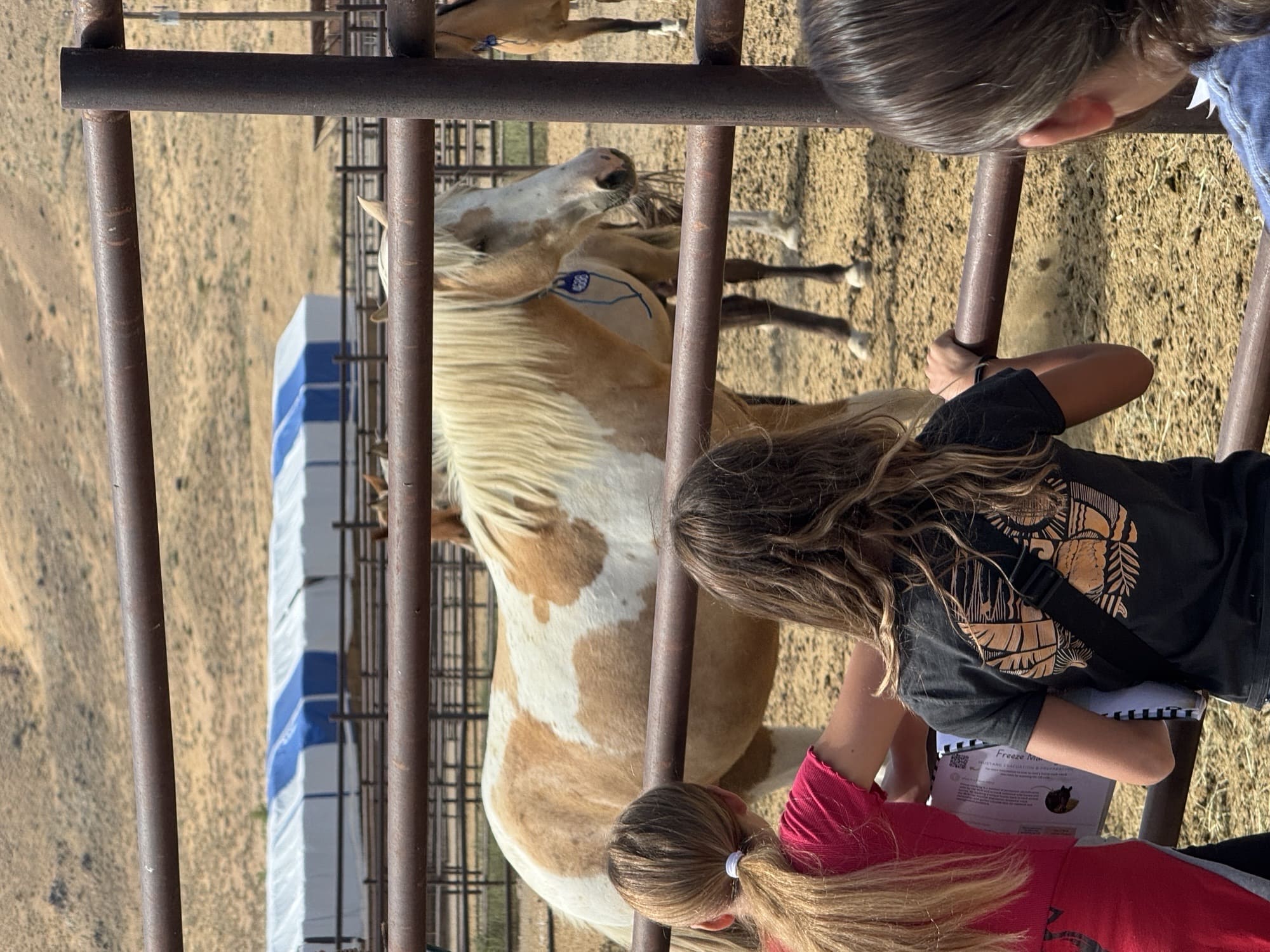
The second day was spent touring the Palomino Valley Wild Horse and Burro Center, 30 minutes north of Reno. By the end of the day, many of the youth were wanting to attend the camp again next year and bring some friends with them, and a few of them had started to plan how they could adopt a horse themselves. Kerby said that through the camp, the youth had also come to realize that in addition to ensuring the mustangs remain a part of our Western ranges for years to come, it’s also important to care for the land and all the wildlife on the range. She added that, like at all 4-H camps, the youth also learned about teamwork and responsibility.
“The Mustang Camp provided a safe environment where our kids were also able to build confidence, develop practical skills, and form positive relationships with both animals and peers,” she said.
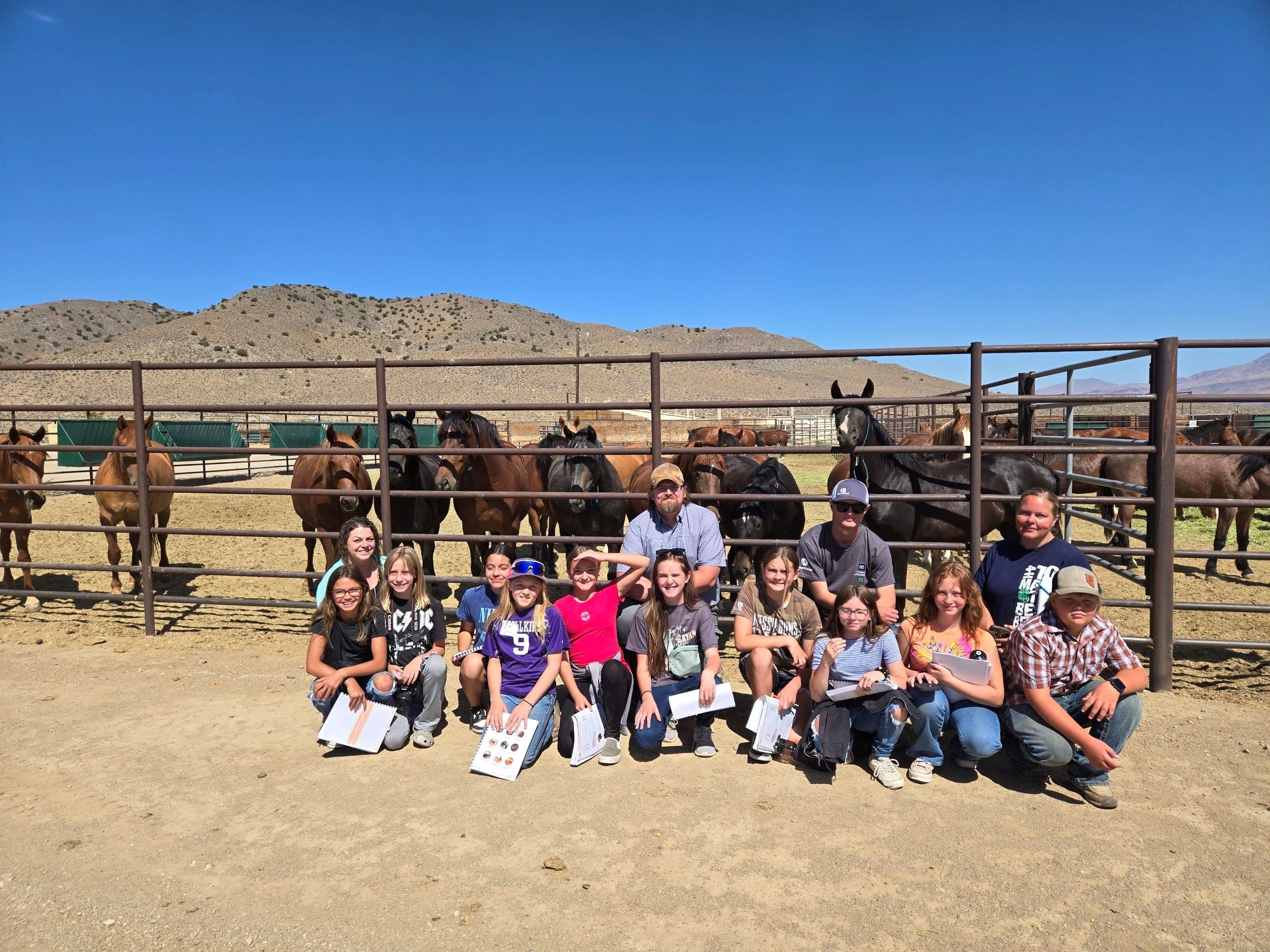
At 4-H day camps and overnight camps in Nevada, thousands of youth each year gain hands-on learning experiences and make lifelong friendships and memories. At the Nevada State 4-H Camp in Lake Tahoe, 4-H has been offering summer camps for more than 80 years, and a couple of years ago, 4-H also began offering camps at Nevada 4-H Camp Alamo, 100 miles north of Las Vegas.
Bringing Nevada spirit to the nation’s Capitol this Christmas
In January, the Humboldt-Toiyabe National Forest announced that it has been selected to provide the 2025 U.S. Capitol Christmas Tree, marking the first time the U.S. Forest Service will harvest the tree from the Humboldt-Toiyabe and from the state of Nevada. The U.S. Capitol Christmas Tree is a tradition that began in 1964 in which one of America’s 154 national forests provides a tree for the West Lawn of the U.S. Capitol for the holiday season. The Humboldt-Toiyabe National Forest is the largest in the continental United States, encompassing more than 6 million acres in Nevada and California.
With a theme for the tree of “Starry Skies to Neon Lights – Spirit of the Silver State,” the U.S. Forest Service put out a call in May for 10,000 handmade ornaments, ranging from 4 inches to 12 inches tall, that will be required for the gigantic tree. Youth in Nevada 4-H and Cloverbuds (ages 5-8) joined others across the state to help answer the call and have the ornaments delivered to the Forest Service by Sept. 15. The 4-H and Cloverbud youth provided a variety of handmade ornaments showcasing their artistic talent, as well as what makes our state unique and what “Home Means Nevada” means to them. The Forest Service specifically asked that ornaments reflect Nevada traditions and people; iconic landscapes and special places; our public lands and how people enjoy them; and our wild plants, animals and geology.
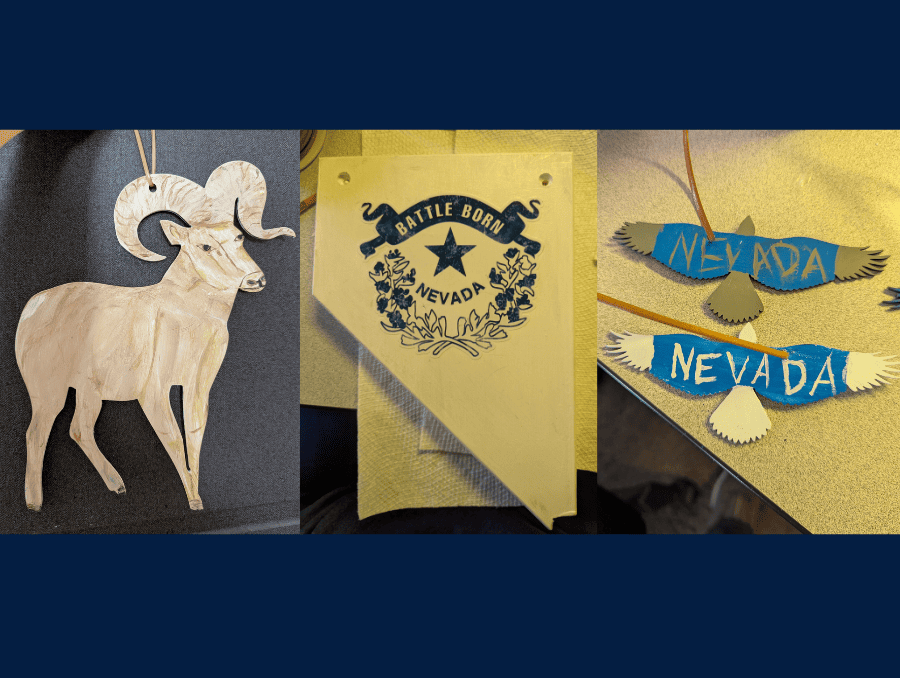
Anna Whiteside and Sara Sweeney, from the Extension office in northern Nye County, helped coordinate the effort for more than 20 4-H youth in Tonopah and Round Mountain to make 50 ornaments to be sent to the White House. The ornaments were made of wood and hand-painted, or were crafted from other art supplies, many of them depicting Nevada wildlife or “Battle Born,” as displayed on the state’s flag. Sweeney said the youth were excited to represent Nevada and contribute to the effort.
“They were also very excited about where the ornaments were going to be displayed,” she said. “One of the younger kids said, ‘This ornament is going to be famous, so I am going to try my best.’ They had a lot of fun, but they also took it pretty seriously and put a lot of thought into their ornaments.”
Youth in other areas of the state also participated. Douglas County 4-H youth provided hand-painted Nevada-shaped ornaments, many of them depicting starry skies or eagles. Youth from Lyon County provided hand-painted, wooden, horse-themed ornaments. Youth from Pershing County provided hand-sewn ornaments.
The U.S. Capitol Christmas Tree project is made possible with support from partners, including nonprofits Society of American Foresters and Sierra Forever, along with contributions from companies and volunteers across America. Encouraging volunteerism, community service and leadership, and civic engagement is a pillar of the 4-H Youth Development Program. In fact, 4-H youth are four times more likely to contribute to their communities and two times more likely to have the goal of being a leader than their peers.
Growing informed consumers: from seed to plate
Youth in White Pine County got to experience firsthand what it takes to get a pizza on their table by participating in the 4-H Grow a Pizza Program. Held at the Boys and Girls Club in White Pine County, youth planted and harvested wheat, used a mortar and pestle to grind wheat berries to make flour, and made the dough for the crust from it. They also grew tomatoes, basil and parsley; and made mozzarella cheese. The last day of the program, youth made mini pizzas and got to eat their creations. The goal of the program was for youth to appreciate all of the steps it takes to get food on their tables, providing education on our food system, from farm to table.
Youth in 4-H engage in similar activities throughout the state, engaging in clubs that teach cooking, food safety, nutrition, and gardening and horticulture. Besides gardening, many other 4-H clubs include healthy physical outdoor activities, from skiing to horsemanship and fishing. “Health” is one of the 4 H’s of 4-H: Head, Heart, Hands and Health. 4-H members are nearly twice as likely to make healthier choices and are more likely to be physically active than their peers.
Nationwide, the 4-H Youth Development Program reaches nearly 6 million young people through experiences that develop critical life skills. Through the 4-H Beyond Ready national initiative, 4-H aims to increase that number to 10 million youth annually by 2030. 4-H is the youth development program of our nation’s Cooperative Extension System and the USDA, and serves every county and parish in the U.S. through a network of 110 public universities and more than 3,000 local Extension offices. In Nevada, Extension is a unit of the College of Agriculture, Biotechnology & Natural Resources at the University of Nevada, Reno. Globally, 4-H collaborates with independent programs to empower 1 million youth in 50 countries with research-backed 4-H experiences.
In Nevada, persons in need of special accommodations or assistance for attending 4-H events should contact Paul Lessick, civil rights and compliance coordinator, at plessick@unr.edu or 702-257-5577 at least five days prior to the scheduled event with their needs or for more information.
